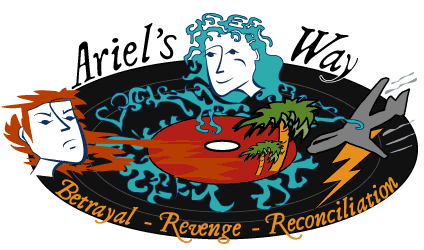
Three decades of teaching the Shakespeare canon to young adults has given me a chance to revisit major works many times, and a lifetime of theatre going has let me see most of Shakespeare’s dramas on stage. In years past I’ve enjoyed reading the scholarship of Frank Kermode, Stephen Greenblatt, and Marjorie Garber. Chantal Zabus’ Tempests After Shakespeare (Palgrave, 2002) was especially helpful as the concept of Ariel’s Way began to take shape. Most recently I’ve devoted dozens of well-spent hours to James Shapiro’s A Year in the Life of William Shakespeare, Germaine Greer’s Shakespeare’s Wife, and Charles Nicholls’ The Lodger Shakespeare. I recommend all of these books, especially Nicholls’ eminently readable “history mystery.”
As the creator of Ariel’s Way (a musical adaptation of The Tempest), more important and useful to me than all of the fine studies I just mentioned is Irene Dash’s masterful work, Shakespeare and the American Musical (Indiana University Press, 2010). The germ for Ariel’s Way was planted as I worked one winter with middle school students on a production of The Tempest, and the following spring with high school students on West Side Story. Was there a musical version of The Tempest? I wondered. I found several operatic versions, and incidental music by Mendelssohn, Arthur Sullivan, Sibelius and others. But, with the possible exception of the “juke-box musical,” Return to the Forbidden Planet, I found no Tempest musicals, and so I set about creating one. In the process I investigated the same five musicals that Ms. Dash discusses so well: Boys from Syracuse (The Comedy of Errors), Kiss Me, Kate (The Taming of the Shrew), West Side Story (Romeo and Juliet), Your Own Thing (Twelfth Night), and Two Gentlemen of Verona.
Ms. Dash carefully and engagingly charts the development of a tradition of American reprisals of Shakespeare plays during the twentieth century. She brilliantly uses primary sources (such as Leonard Bernstein’s annotated copy of Romeo and Juliet, and letters written by Bella Spewack and Cole Porter about their Kiss Me, Kate collaboration) to show how American writers, composers, choreographers, scenic designers, and producers brought their own creativity and social circumstances to bear upon the proven power of Shakespeare’s texts. An inveterate adaptor himself, Shakespeare thrived on re-telling familiar tales to suit his own talents, tastes and times. His twentieth-century American admirers did him exactly the same service, and Irene Dash shows us how, and sometimes even why.
Shakespeare loved spectacle and music, and his collaborations with lutenists Thomas Morley, Robert Johnson, and other leading composers of his day, are well documented. The Tempest, scholars now believe, was likely written to be performed with a score, and its composition parallels the birth of opera in Italy. Had he lived in our time, would Shakespeare have worked on Broadway or in the West End? No doubt he would have sought the widest possible audience for his work, and the most talented collaborators. Wouldn’t that search have taken him to Broadway?
Such speculation is much less interesting, to me, than the sort of careful, empirical analysis that Ms. Dash conducts in the course of her study. She knows the Shakespeare “originals” and their musical adaptations equally well, and as she moves back and forth, between and among them, brilliant social and aesthetic insights emerge from her analysis as petals unfold from flowers. Her range and depth as a scholar are as impressive as her prose is delightful to read.
Shakespeare and the American Musical defines a living tradition in twentieth-century theater. Ariel’s Way finds its center of gravity just there (it is set in the 1970s), even as it continues that tradition into the twenty-first century. Grateful for the intelligence and imagination that Irene Dash focused on her task, I hope that my own creative efforts might swell the sails of that tradition, propelling it in the direction of a brave, newer world.

No comments:
Post a Comment